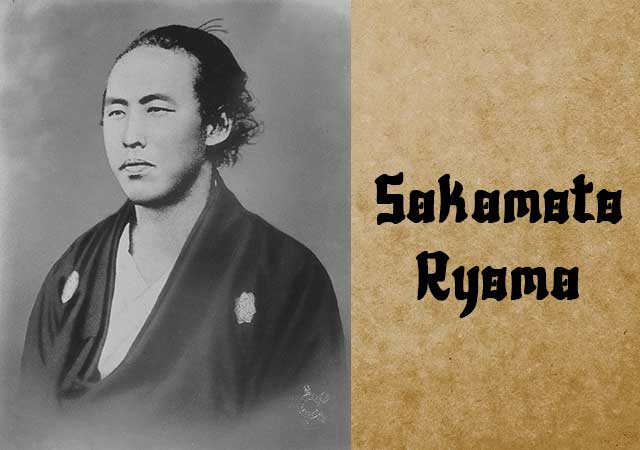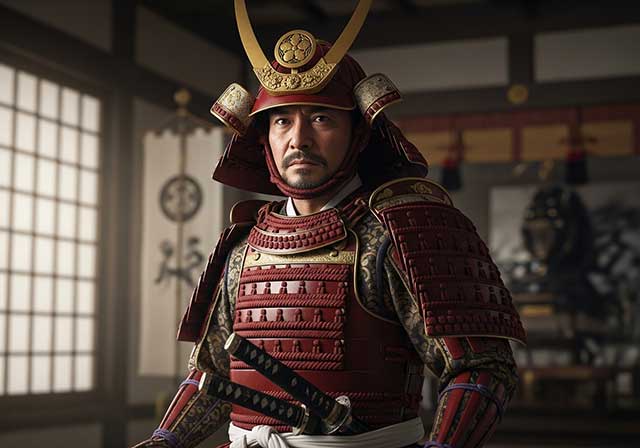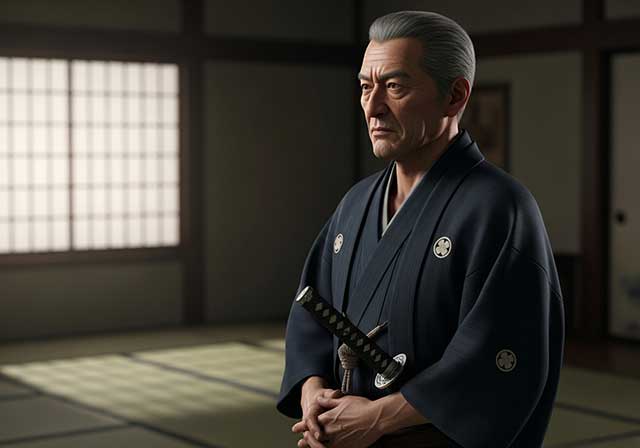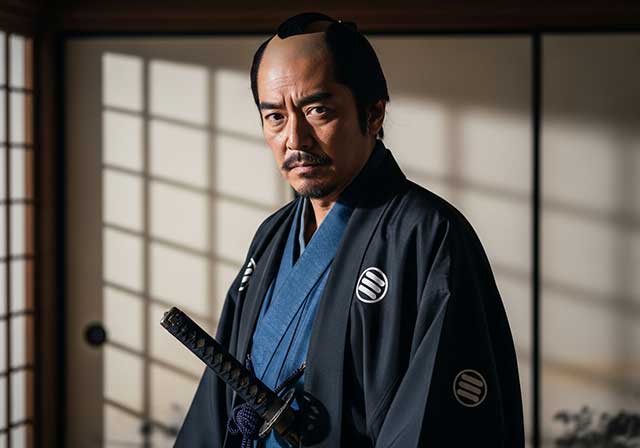
Sakamoto Ryoma stands as a pivotal figure in the overthrow of the Tokugawa Shogunate, revered as one of the Edo period's greatest heroes. Born on January 3, 1836, in Kochi, Toda domain in Shikoku, Ryoma hailed from a lineage of affluent sake brewers. His great grandfather's investment secured the family the status of merchant samurai, known as Goshi, within the samurai hierarchy.
Demonstrating exceptional swordsmanship from a young age, Ryoma earned the privilege to travel to Edo to hone his skills further. He underwent training at the prestigious Hokushin Itto-Ryu school, achieving the esteemed rank of Shihan (master instructor) and later imparting his knowledge of sword techniques at the same institution. Upon his return to Kochi in 1858, Ryoma found Japan grappling with the repercussions of Commodore Matthew C. Perry's arrival in 1854, which shattered the nation's self-imposed isolation and sparked anti-foreign and anti-Tokugawa sentiments.
While rebel factions in Tosa, Ryoma's home domain, initially advocated for localized reforms, Ryoma championed nationwide change. Despite the risk of death (as demonstrated by his sister's suicide), Ryoma defied orders and targeted Katsu Kaishu, a prominent Tokugawa official, for assassination. However, upon confronting Kaishu, Ryoma was swayed by the latter's vision of modernizing Japan's military strength and opted to become his assistant instead of an assassin. Together, they established a formidable naval force.
Ryoma's most significant contribution came from uniting former adversaries—the Satsuma and Choshu clans—forming a coalition that would ultimately dismantle the Tokugawa Shogunate after 260 years of rule.
Unfortunately, on December 10, 1867, Ryoma and his companion Nakaoka Shintaro fell victim to an ambush at the Omiya Inn in Kyoto. Assassins, purportedly from the Shinsengumi, attacked, fatally injuring both Ryoma and Nakaoka. Ryoma succumbed to his wounds that night, while Nakaoka passed away two days later. Despite accusations and executions within the Shinsengumi, the identities of Ryoma's assailants remain undisclosed.
Ryoma's legacy endures as a symbol of selfless devotion to Japan's welfare. His principles and untimely demise have immortalized him as a national hero, revered to this day.
See also
-
Yamagata Masakage

Masakage was one of Takeda Shingen’s most loyal and capable commanders. He was included in the famous list of the “Twenty-Four Generals of Takeda Shingen” and also belonged to the inner circle of four especially trusted warlords known as the Shitennō.
-
Yagyu Munenori

Yagyū Munenori began his service under Tokugawa Ieyasu while his father, Yagyū Muneyoshi, was still at his side. In 1600, Munenori took part in the decisive Battle of Sekigahara. As early as 1601, he was appointed a kenjutsu instructor to Tokugawa Hidetada, Ieyasu’s son, who later became the second shogun of the Tokugawa clan.
-
Yagyu Muneyoshi

A samurai from Yamato Province, he was born into a family that had been defeated in its struggle against the Tsutsui clan. Muneyoshi first took part in battle at the age of sixteen. Due to circumstances beyond his control, he was forced to enter the service of the Tsutsui house and later served Miyoshi Tōkei. He subsequently came under the command of Matsunaga Hisahide and in time became a vassal first of Oda and later of Toyotomi.
-
Endo Naozune

Naozune served under Azai Nagamasa and was one of the clan’s leading vassals, renowned for his bravery and determination. He accompanied Nagamasa during his first meeting with Oda Nobunaga and at that time asked for permission to kill Nobunaga, fearing him as an extremely dangerous man; however, Nagamasa did not grant this request.
-
Hosokawa Sumimoto

Sumimoto came from the Hosokawa clan: he was the biological son of Hosokawa Yoshiharu and at the same time the adopted son of Hosokawa Masamoto, the heir of Hosokawa Katsumoto, one of the principal instigators of the Ōnin War. Masamoto was homosexual, never married, and had no children of his own. At first he adopted Sumiyuki, a scion of the aristocratic Kujō family, but this choice provoked dissatisfaction and sharp criticism from the senior vassals of the Hosokawa house. As a result, Masamoto changed his decision and proclaimed Sumimoto as his heir, a representative of a collateral branch of the Hosokawa clan that had long been based in Awa Province on the island of Shikoku. Almost immediately after this, the boy became entangled in a complex and bitter web of political intrigue.
-
Honda Masanobu

Masanobu initially belonged to the retinue of Tokugawa Ieyasu, but later entered the service of Sakai Shōgen, a daimyo and priest from Ueno. This shift automatically made him an enemy of Ieyasu, who was engaged in conflict with the Ikkō-ikki movement in Mikawa Province. After the Ikkō-ikki were defeated in 1564, Masanobu was forced to flee, but in time he returned and once again entered Ieyasu’s service. He did not gain fame as a military commander due to a wound sustained in his youth; nevertheless, over the following fifty years he consistently remained loyal to Ieyasu.
-
Honda Masazumi

Masazumi was the eldest son of Honda Masanobu. From a young age, he served Tokugawa Ieyasu alongside his father, taking part in the affairs of the Tokugawa house and gradually gaining experience in both military and administrative matters. At the decisive Battle of Sekigahara in 1600, Masazumi was part of the core Tokugawa forces, a clear sign of the high level of trust Ieyasu placed in him. After the campaign ended, he was given a highly sensitive assignment—serving in the guard of the defeated Ishida Mitsunari, one of Tokugawa’s principal enemies—an obligation that required exceptional reliability and caution.
-
Hojo Shigetoki

Hōjō Shigetoki, the third son of Hōjō Yoshitoki, was still very young—only five years old—when his grandfather Tokimasa became the first member of the Hōjō clan to assume the position of shogunal regent.

